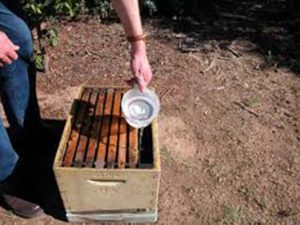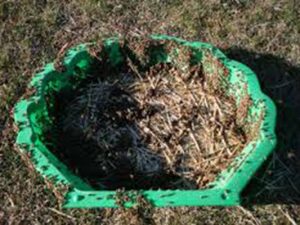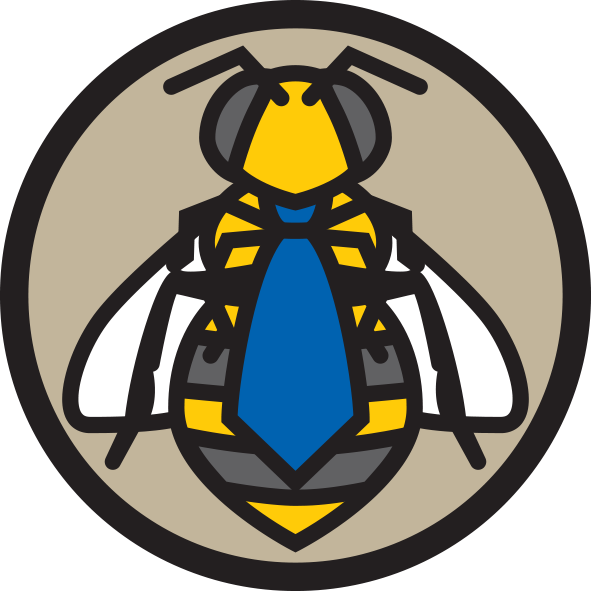By definition honey is a “natural sweet substance produced by honey bees from the nectar of blossoms … which honey bees collect, transform and combine with specific substances of their own, store and leave in the honey comb to ripen and mature”: Australia New Zealand Standards Code.
Feeding sugar and sugar syrup is an important and legitimate beekeeping practise which needs to be carefully managed. Frames of honey produced from supplementary feeding do not conform to legal standards. Extraction of honey made from sugar syrup may result in that batch of honey appearing to be adulterated with C4 sugars.
Supplementary feeding, providing sugar syrup and/or pollen to bee colonies in the cooler months, has become an important beekeeping practice due to reduced forage from increased urbanisation, degradation of our natural spaces, drought, fire and restrictions on beekeeping. Supplementary feeding is used not only to help bee colonies survive winter, but to build their populations ready for pollination contracts, starting with almonds in late winter.
Video: Supplementary feeding with Doug Somerville, NSW Department of Primary Industries, Technical Specialist Honey Bees
Studies on supplementary feeding have found mixed results. It is clear that environmental conditions, particularly the quality and quantity of natural forage, determine whether or not supplementary feeding is effective.
An Agrifutures study investigated the effect of supplementary feeding in the operations of Australian beekeepers.
The first trial was conducted in two apiaries of approximately 40 colonies each, used for almond pollination in Victoria. Supplementary feeding with either sugar syrup, pollen or a combination of sugar syrup and pollen had no major benefit to colony populations. Rather, supplemented colonies tended to have fewer frames of bees.

Pouring sugar syrup into a frame feeder. Source: NSW DPI
Generally, colonies given supplementary feeding had significantly higher Nosema levels than control colonies. At one of the two apiaries Nosema was lower in colonies given a pollen supplement every 6 weeks. At the start of winter, colonies with more than 6 frames of bees had significantly less Nosema than those with less than 6 frames of bees.
The second trial utilised two apiaries working mugga ironbark (Eucalyptus sideroxylon) in New South Wales, which is a good nectar source but a poor pollen source. The colonies were provided with different “pollen” supplements. In contrast to the first experiment, more brood was produced by supplemented colonies. Supplemented colonies at one of these apiaries put on more weight than control colonies, while the results were reversed in the other apiary. The difference in honey production between colonies supplemented with the “pollen” sources or not supplemented was not enough to make this treatment economical. While the supplemented colonies produced twice as much honey as control colonies, the cost of supplementation was higher than that made in extra honey production. In this trial there was no difference in Nosema incidence in supplemented versus control colonies.

Open sugar syrup feeder, the hay is to prevent bees from drowning. Source: NSW DPI
The results of this study are surprising, and indicate that use of supplementary feeding may have serious negative effects on beekeeping operations in Australia. In some cases supplementary feeding may lead to increased honey production later in the season, but the supplements may cost more than the value of the honey produced.
Supplementary feeding remains important when used to prevent starvation and it’s important that feeding is done in a responsible manner by beekeepers. A variety of approved ways to feed sugar can be found at NSW Department of Primary Industries. Please be aware of and follow the Australian Honey Bee Industry Biosecurity Code of Practice.
Podcast: You can also listen to Supplementary Feeding with Doug Somerville as a podcast.
Acknowledgements
- Somerville, D. Collins (2007) Field trials to test supplementary feeding strategies for commercial honeybees. Rural Industries Research and Development Corporation publication 07/119
- Somerville (2014) Feeding sugar to honey bees. Primefact 1343, NSW Department of Primary Industries
About the authors Dr Doug Somerville, Nadine Chapman


2 comments, add yours.
John Winkels
As always very good information
ruthluckner
AuthorThanks John it’s great to hear our content is hitting the mark!